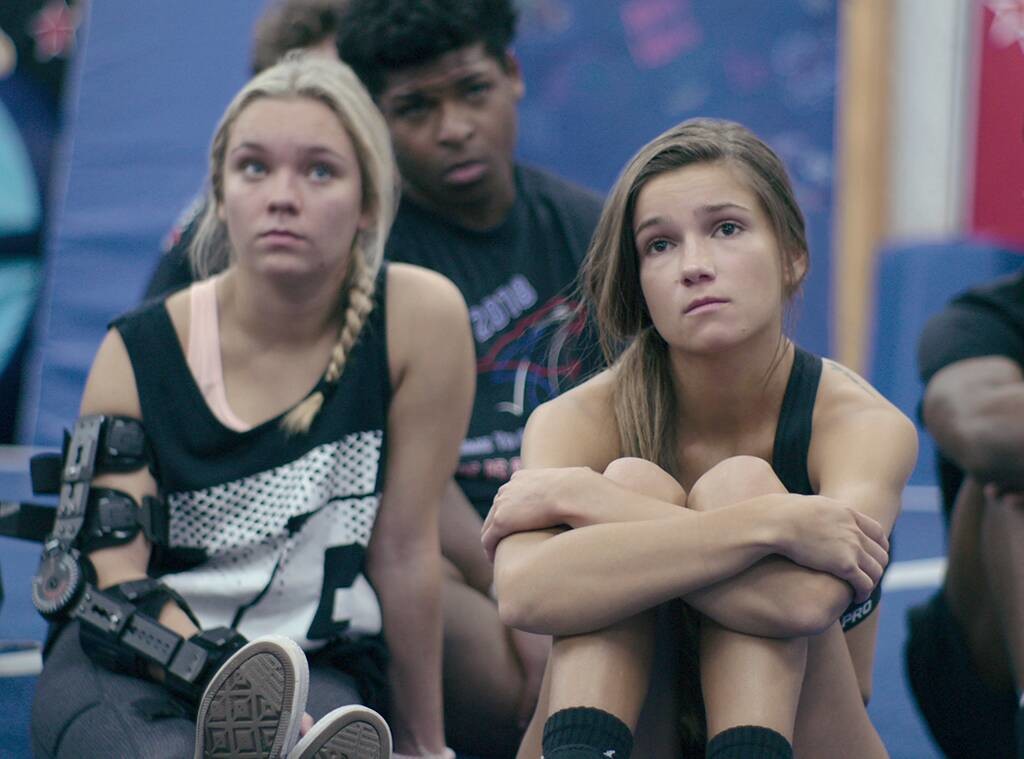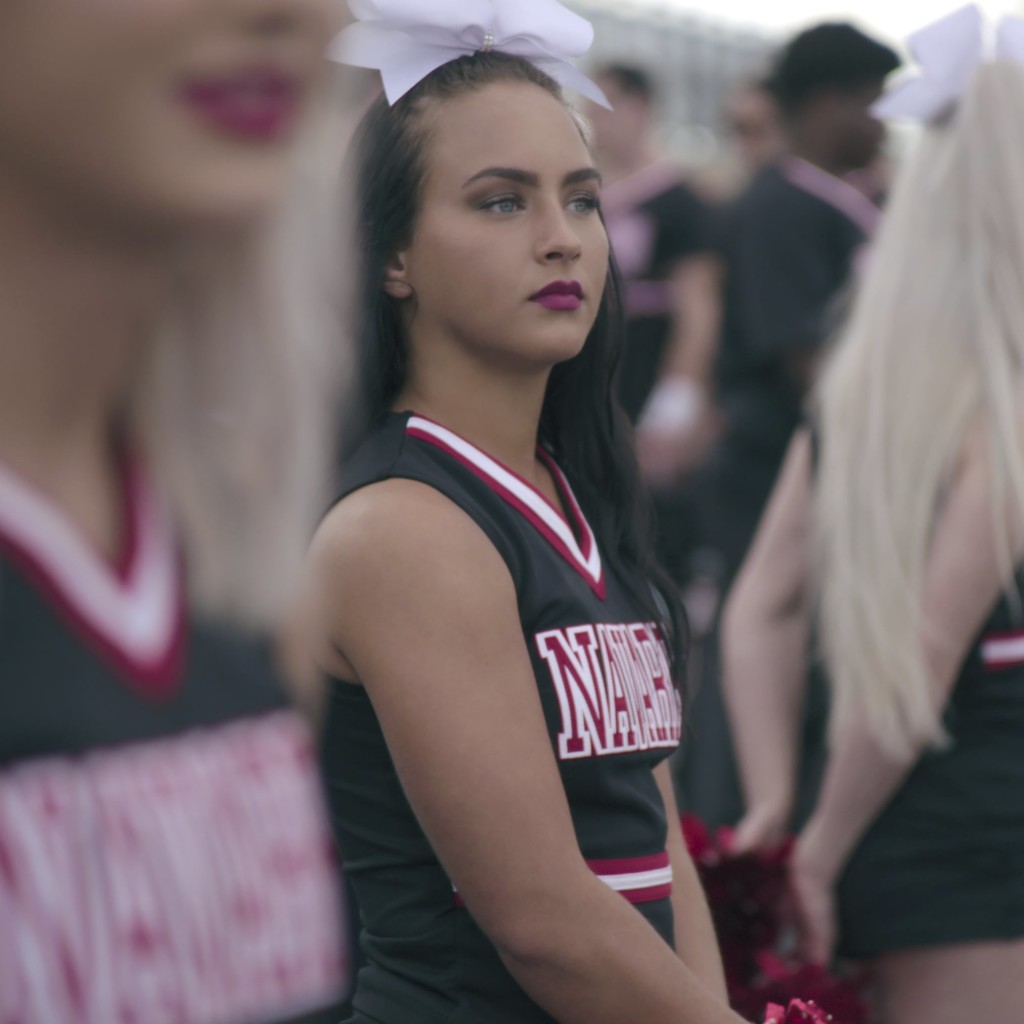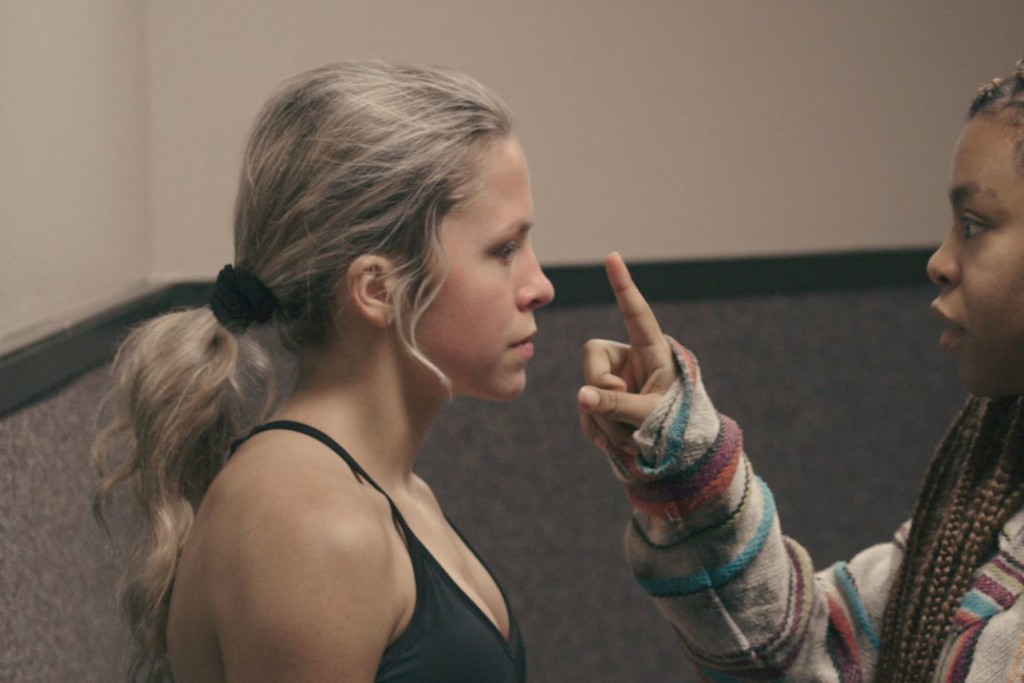You know how when everyone tells you you have to watch something and it gets to the point where it’s so annoying how obsessed everyone is with that something that you’re determined to never watch it as some sort of spiteful point to be made that you’re not as weak-minded as all these sheep who only like something because everyone tells them to like it and then one day you finally sit down to watch that something, determined with every bone in your body to hate it so you can storm back to the masses and tell them they were all wrong only to get five minutes into the first episode and cancel everything you’re doing that day so you can watch the show all in one sitting?
That’s what happened when I watched Cheer, the new Netflix docu-series about a top-flight junior college cheer team in the middle of Texas. Soon I was yelling through the television to assure Morgan that, no, people do care for you, and to Jerry, for always being positive despite all the negativity surrounding him (#beaJerry), and leaping up with my hands over my mouth when someone forgot to catch Sherbs and she cracked her arm in half.
How did this happen? I’d went through my entire adult life without so much as sniffing a cartwheel. Then for six hours, my entire life revolved around cheerleading. This may seem insignificant for a screenwriting site. But there are actually screenwriting lessons to be learned here and it all starts with the concept itself. What do I always tell you guys? One of the best ways to turbocharge a concept is by adding irony.
Cheerleading is a happy peppy smiley sport. When you think of cheerleading, you think of joy. You think of people being positive. Yet one of the first things we see when we dolly in on a Navarro practice session is how serious everyone is. They’re practicing their routine, which involves lots of flipping and throwing people up 20 feet in the air. If one person isn’t paying attention, someone could snap their neck. As series favorite Morgan says in the second episode, “Whoever thought of chucking someone into the air and seeing how many times they can flip them… that person is psychotic.”
But it isn’t just the seriousness. A lot of the people who come to this sport have had really difficult lives. Star team member Gabi Butler has parents who have built the family business around her, with Gabi having no say in the matter whatsoever. She is not a daughter to them. She is a paycheck. And you can see how much strain this has put on her and her family relationship. In one of her segments, before an 8 hour practice day, they force her to get up at 4am to shoot a commercial. Then yell at her for not doing more to promote “their” brand.
Or then there’s Morgan, who has the most heartbreaking story of them all. While she was in high school, her dad just left her to start another family. She lived in a barn with her brother. And then her brother left too. So she was literally living all by herself with no income and no food until she was 18. She says she began to believe during that time that nobody cared about her and that things as simple as a passing smile at school were the only things that kept her going.
That irony, that contrast between what we expect cheerleaders to be like and what they actually are is a huge reason the show works so well. For example, if you followed a cheerleading team where everyone was happy and excited all the time, you’d get bored of it immediately. On the flip side, if you wrote a show about grave diggers and they were all the happiest people in the world, it’d be great. The contrast is what makes the product so alluring. That’s the power of irony.
There was another lesson I learned from the show in one of the press interviews. Several featured cast members were asked “Why them?” There were 40 people on the team. Why did these seven people get all the focus? And one of the cast members answered, “The director interviewed every one on the team. We were the ones they thought had the most interesting lives.”
For example, one of the most popular characters is Jerry. Jerry is unlike any cheerleader you’ve known. He was 300 pounds at one point in high school and still cheering. His mother died unexpectedly when he was young. He got lucky that a family adopted him. He’s relentlessly optimistic no matter how many terrible things happen in his life. Let’s take a step back and pretend we’re a writer looking for a character to put in our screenplay. Are we going to pick Jerry? Or are we going to pick Bob, an enthusiastic cheerleader who’s really trying to kick butt at nationals so he can impress some folks in LA in order to pursue his real passion, acting?
The same way these documentarians look for the most interesting people to document, that’s how you should be looking for characters for your stories. Are you just giving us the standard formula character? Or are you giving us someone who’s unique and who’s lived a full life, a life that’s going to affect them in your story, give them flaws and weaknesses they have to overcome. Since Jerry wants everyone to be happy, he doesn’t stick up for himself. When he gets kicked off mat, he doesn’t go up and ask the coach why. He accepts it. That’s a lesson he has to learn during the season. And you only get that kind of stuff when you start off with a deep character to begin with. Their past will inform their present flaws.
Even from a traditional plotting standpoint, Cheer is screenwriting’esque. One of the first things we’re told in the show is that “NATIONALS IS IN TWO MONTHS.” Right there we’ve got our goal, our stakes, and our urgency. From there, they do a great job creating obstacles via injuries. One of the most surprising things about Cheer is how often people get injured. They’re falling and slamming into the floor constantly. So when you only have a few girls who can manage the trickiest parts of the routine – being at the top – and one of them is all of a sudden done for the year because of an injury, we’re wondering, “How are they going to overcome this?”
Remember, once you set the goal for your story, the only job you have is CREATING DOUBT that your characters will achieve it. And Cheer was really interesting in that it has the same problems as Friday Night Lights or some of these other “top dog program” shows. Navarro always wins the championship. They’re the best team in the nation. So if you have a storyline where the goal feels like a foregone conclusion, the obstacles must be bigger. The setbacks even more daunting. And the show does an amazing job at that. People are constantly getting injured. Monica, the coach, is seen in back rooms convinced that the replacement cheerleader doesn’t have what it takes, that they’ll screw up come game time. And if she thinks that, it must be true. So our doubt that Navarro will win is solidified when we walk into that final episode.
I recommend that everybody watch this show. I know. It seems like something you wouldn’t be into. But I promise you if you give it ten minutes, you’ll change your mind. And pay attention to the simplicity of the formula because that formula has a lot of crossover with screenwriting. A simple goal – win the championship. But a complex cast of characters. Each person is struggling in their own unique way, which adds to the doubt that they’ll be able to achieve their goal as well as achieve success in their life after cheering. Afterwards, tell me what you think! Unless you think it’s bad. In that case, you’re wrong.




